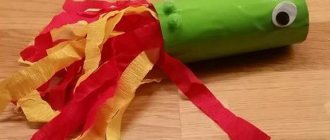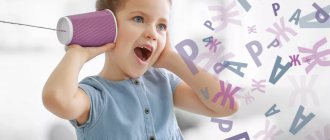Speech therapy facial massage
With the help of speech therapy facial massage, the necessary verbal areas that previously worked poorly or did not work at all are activated. The tone of the muscles responsible for speech activity is consistently improved.
Children's speech therapy massage
Methods of treatment for disorders of the speech apparatus
The logomassage technique is used in the treatment of various ailments:
- Dysarthria,
- Dislalia,
- Rhinolalia,
- Tahilalia.
Additional Information! Manipulations may also be carried out in order to prevent the occurrence of violations.
Corrective work is carried out in several directions:
- Using palpation and identifying areas that need treatment.
- Carrying out the desired type of logomassage,
- Speech therapy classes.
Methodology:
- Facial muscle treatment
- Application of classical techniques with increasing pressure force,
- There should not be any unpleasant effects.
- Stroking and rubbing with hands are relevant. The massage should be completed with tapping and pinching.
Types of logomassage
These include:
- A classic massage that can be used by all children. With its help, muscle tone is activated and stimulated.
- Acupressure is performed in areas of accumulations of blood vessels and nerve endings.
- Using vibration and vacuum devices. A special type, probe. Its author is Novikova E.V. - speech therapist and educator.
Speech therapy massage with spoons
Speech therapy massage with spoons is one of the types of logomassage. A detailed description of the technique is given in the book by O. I. Krupenchuk.
Speech therapy massage with spoons
Important! To successfully carry out the procedure, the child’s calmness, a relaxed state and the ability of an adult to carry out everything in comfortable, natural conditions with the presence of playful moments are necessary.
The massage is carried out using spoons and is very effective for the development of children's speech.
Techniques:
- The temples, eye sockets and cheeks are stroked with spoons.
- Switch to rubbing the area between the eyebrows and nasolabial area,
- Warm up the chin and cheekbones.
It is worth preparing 4 teaspoons in advance.
Speech therapy self-massage
The child himself participates in speech therapy self-massage. Self-massage complements the effects of the speech therapist’s main massage.
Self-massage in speech therapy
With its help, the kinesthetic sensations of the muscles that participate in the functioning of the peripheral speech apparatus are stimulated. At first, the child should perform all exercises while standing in front of a mirror.
Lesson on speech development in the senior group of kindergarten
Hydrogymnastics
Hydrogymnastics exercises for children in speech therapy are:
- Rolling a rubber ball in water between your fingers,
- Using a tetrahedral stick to influence the palms and arms,
- With the help of beads, curlers, and pebbles, the pads of the fingers and palms are affected.
Speech therapy massage with a toothbrush
Logomassage of the tongue with a toothbrush will help with:
- Sound pronunciation corrections,
- Improving the condition of the vocal cords and voice,
- Strengthening tray reflexes,
- Reducing stuttering and dysarthria.
The toothbrush should have soft bristles. Avoid strong pressure and painful effects.
Air jet
Forming an air stream in speech therapy is the development of good speech breathing. Sounds are produced using an air jet. The process of its formation occurs along with the development of phonetic hearing and articulatory motor skills.
Note! Breathing exercises tire the baby very quickly and sometimes cause dizziness. In view of this, these classes are conducted strictly on time and alternate with other exercises.
Speech therapy tongue massage at home
Prescribed for dysarthria - the presence of a short hyoid frenulum.
Logomassage for children
Before performing it, you should completely relax the baby with the help of gymnastics:
- Turn the tongue left and right, pull it with your fingers,
- Slowly roll your tongue around your finger.
Duration and frequency
It is carried out strictly according to the plan and requirements of the specialist. The maximum number of procedures per day is 3 times. Time: from 10 to 15 minutes.
You cannot skip classes - only regular work will bring effective results.
Mood is the main assistant
The most valuable thing in the classes is the child’s cheerful mood and smile at the end of the procedure. Therefore, the parent should introduce an element of play into the activities, talk with the child, telling how the activities will help the child in the future. It is very good if, after all the work, which is sure to bring long-awaited success, the baby has some kind of toy that can be chosen before starting the procedures.
Indications and contraindications
The indications are:
- Voice loss or impairment
- Speech defects,
- Excessive secretion of the salivary glands,
- Stuttering,
- Child's cerebral palsy.
Contraindications:
- Presence of tongue injury
- ARI or ARVI,
- Eye diseases with inflammatory effects,
- Lesions of the oral cavity (stomatitis),
- Epilepsy,
- Oncology,
- Herpes,
- Active phase of tuberculosis.
Formation of sound culture of speech in children
Additional Information! In Moscow, only a specialist can provide high-quality speech therapy massage. One of the professional centers for working with speech disorders is “Slukhon” (Noviye Cheryomushki metro station).
Multifunctional speech therapy game “Sound snail”
Multifunctional speech therapy game
"Sonic Snail"
The manual is intended for individual and subgroup speech therapy sessions with preschool children
Target:
automation and differentiation of sounds, development of phonemic hearing, improvement of lexical and grammatical categories of speech; development of the prosodic side of speech
Tasks:
-form phonetic-phonemic representations and the syllabic structure of the word.
-develop the lexical and grammatical structure of speech, coherent speech.
-stimulate the development of mental and cognitive processes.
-maintain a positive emotional attitude.
-promote the development of children's communication and communication skills.
Annotation.
The versatility of the manual is expressed in the variety of pictures that can be used in accordance with the intended purpose. The pictures are easy to remove and attach; children can change the necessary pictures themselves.
Didactic game “The snail crawls merrily, we are lucky with pictures!”
Target:
automation of sounds in speech, strengthening the agreement of nouns with numerals in children’s speech.
Material
: pictures with images of different numbers of objects for a given sound.
Description
: an adult reads a poem:
The snail crawls slowly, swaying on a leaf,
The snail carries pictures on itself all day long!
The child names pictures, clearly pronouncing the given sounds and correctly coordinating nouns with numerals.
Didactic game “Play with the snail and name the colors!”
Target
: automation of sounds in speech, selection of nouns for adjectives denoting color, fixing the names of primary colors and shades.
Material
: pictures of multi-colored objects for a given sound.
Description
: The speech therapist asks a riddle:
The teremok, look, is crawling, carrying it on itself,
Rich mistress, horned mistress!
The snail has colorful toys in his little house! We will play with the snail and name the colors! The child names pictures, clearly pronouncing sounds, and names an adjective denoting color.
Didactic game “Let’s argue with a snail”
Target
: automation of set sounds in speech, consolidation of antonyms in the child’s dictionary.
Material
: pictures with objects indicating signs: narrow, tall, sharp, hot and others
Description
: The speech therapist reads a poem:
My motto is simple - “I carry everything with me!”
Two antennas above the gate are carried by a snail!
The child selects an adjective for the snail’s picture, and then argues with it and names another adjective with the opposite meaning.
Didactic game “Snail’s Birthday”
Goal: expanding vocabulary, learning to name the way animals call.
Material: pictures of different animals in accordance with the given sounds
Description: The speech therapist reads a poem:
The snail will have a birthday on Sunday!
The only problem is how to invite guests to your home!
Guests came to visit the snail and congratulate her on her birthday. Children name the animals and choose a word as the animal makes its voice.
Didactic game “The snail teaches the tongue to do exercises”
Target
: develop articulatory motor skills of children
Material
: pictures for articulation exercises
Description
: children look at the pictures that the snail is carrying and perform a certain articulation exercise
Speech therapy “Snail”
The speech therapy cochlea helps children automate sounds and develop phonetic hearing. The baby moves his hand along the pictures in the snail, naming the objects he sees.
Speech therapy snail with the letter “sh”
Along with the sound snail, various didactic games are conducted in speech therapy:
- “We name colors with a snail”
- "Arguing with a snail"
- “The tongue and the snail are doing exercises.”
Sound pronunciation
In speech therapy, sound pronunciation is the process of forming speech sounds. It is carried out by different parts of the speech apparatus:
- Generator,
- Resonator,
- Energy.
Sound automation games
In games with speech therapy snails to automate sounds, the child learns new words. At the same time improves pronunciation.
There are other games for automation:
- Walking games. While walking, a verse with a complex sound is recited.
- Repeaters. The kid tells what and who is doing, repeating after the adult.
- Halves. The child is asked to add half to the object: “There was half a dress, but now it’s a whole dress.”
Speech therapy games “Sound snail”
Speech therapy games “Sound snail” for preschool children.
Goal: Automation and differentiation of sounds, development of phonemic hearing, improvement of lexical and grammatical categories of speech; development of the prosodic side of speech.
Didactic game “The snail crawls merrily, we are lucky with pictures!”
Goal: automation of sounds in speech, strengthening the agreement of nouns with numerals in children’s speech. Material: pictures with images of different numbers of objects for a given sound. Description: An adult reads a poem: A snail crawls slowly, Swinging on a leaf, The snail carries pictures on itself all day long! The child names pictures, clearly pronouncing the given sounds and correctly coordinating nouns with numerals.
Didactic game “Play with the snail and name the colors!”
Goal: automation of sounds in speech, selection of nouns for adjectives denoting color, fixing the names of primary colors and shades. Material: pictures of multi-colored objects with a given sound. Description: An adult asks a riddle: Look, the Teremok is crawling. He is carried on himself, the rich Mistress, the horned Mistress! The snail has colorful toys in his little house! We will play with the snail and name the colors! The child names pictures, clearly pronouncing sounds, and names an adjective denoting color.
Didactic game “Let’s argue with a snail”
Goal: automation of assigned sounds in speech, consolidation of antonyms in the child’s dictionary. Material: pictures with objects indicating signs: narrow, tall, sharp, hot and others Description: An adult reads a poem: My motto is simple - “I carry everything with me!” Two antennas above the gate The snail carries its own house! The child selects an adjective for the snail’s picture, and then argues with it and names another adjective with the opposite meaning.
Didactic game “Snail’s Birthday”
Goal: expanding vocabulary, learning to name the way animals call. Material: pictures of different animals in accordance with the sounds Description: An adult reads a poem: The snail will have a birthday on Sunday! The only problem is, how to invite guests to your home! Guests came to visit the snail and congratulate her on her birthday. Children name the animals and choose a word as the animal makes its voice.
Didactic game “The snail teaches the tongue to do exercises”
Purpose: to develop children’s articulatory motor skills Material: pictures for articulation exercises Description: children look at the pictures that the snail carries and perform a certain articulation exercise










